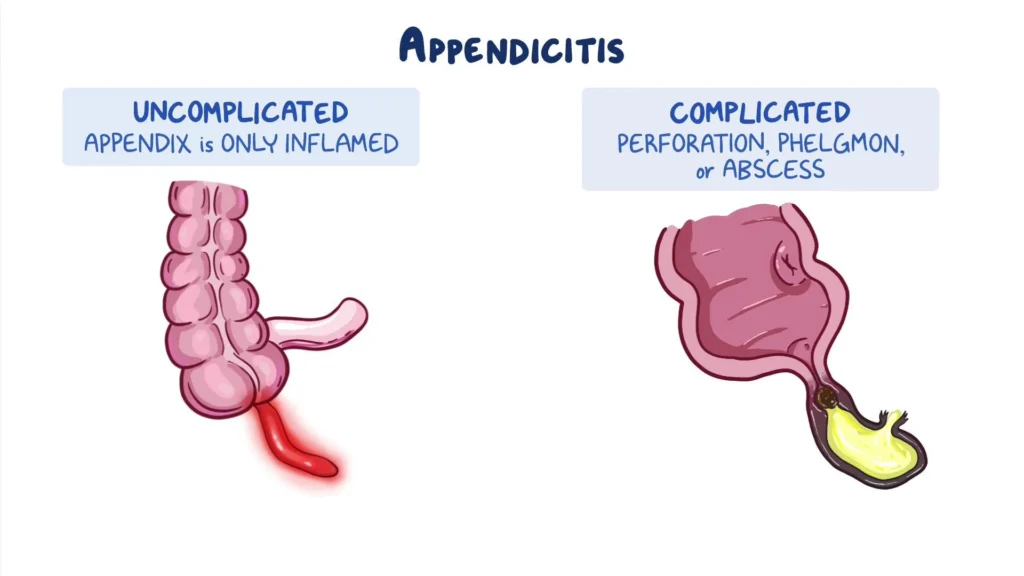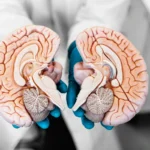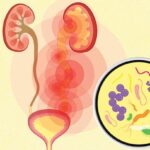Appendicitis, the inflammation of the appendix, is one of the most common abdominal emergencies requiring urgent medical intervention. While uncomplicated appendicitis is generally straightforward to treat, complicated appendicitis involves additional risks, making it more challenging to manage. This condition requires a deeper understanding to ensure timely diagnosis and effective treatment to prevent serious complications such as perforation, abscess formation, or sepsis. In this comprehensive guide, we explore the various facets of complicated appendicitis, including its causes, symptoms, diagnostic processes, and treatment options.

What is Complicated Appendicitis?
Complicated appendicitis refers to a more advanced and severe form of appendicitis, characterized by additional complications beyond simple inflammation. In contrast to uncomplicated appendicitis, which typically presents with localized pain and responds well to surgical removal of the appendix (appendectomy), complicated appendicitis involves additional issues like perforation (rupture), abscess formation, or gangrene. These complications increase the risk of systemic infection, prolonged recovery, and potential long-term health issues.
Common Complications of Appendicitis
- Perforated Appendicitis
A perforated appendix occurs when the inflammation causes the appendix to rupture, allowing infected material to spill into the abdominal cavity. This leads to peritonitis, a life-threatening infection of the abdominal lining. If untreated, it can result in septic shock and organ failure. - Gangrenous Appendicitis
Gangrene refers to the death of tissue due to lack of blood supply. In appendicitis, if the appendix is deprived of adequate blood flow, the tissue may necrose, increasing the risk of rupture and subsequent infection. - Appendiceal Abscess
An abscess is a pocket of pus that forms around the inflamed appendix as the body attempts to contain the infection. While an abscess can delay rupture, it still requires immediate treatment to avoid sepsis or further spread of infection. - Sepsis
Sepsis is a severe infection that can spread throughout the body following a ruptured appendix or abscess. It is characterized by a systemic inflammatory response, leading to organ failure and possibly death if not treated rapidly.
Causes and Risk Factors of Complicated Appendicitis
The precise cause of appendicitis is still not fully understood, though several factors contribute to the development of this condition. The primary cause is an obstruction in the appendix, which can lead to infection and subsequent inflammation. The obstruction may be due to:
- Fecaliths (Stool Blockages): Hardened stool that blocks the appendix.
- Lymphoid Hyperplasia: Enlargement of lymphatic tissue, often seen in younger individuals.
- Foreign Bodies or Tumors: Rare causes that may block the appendix.
- Infection: Gastrointestinal or viral infections can increase the risk of appendicitis by leading to swelling in the appendix.
Additionally, certain factors increase the likelihood of developing complicated appendicitis:
- Delayed Medical Attention: The longer the condition is left untreated, the higher the risk of complications.
- Age: Younger and older populations are more susceptible to complicated cases.
- Previous Appendicitis Episodes: Recurring episodes may increase the risk of complications.
- Underlying Health Conditions: Conditions like diabetes or immune deficiencies can impair the body’s ability to fight infections, leading to more severe outcomes.
Symptoms of Complicated Appendicitis
While the initial symptoms of complicated appendicitis may resemble those of uncomplicated appendicitis, complications such as perforation or abscess formation tend to present with more severe or distinctive signs. These include:
General Symptoms of Appendicitis
- Abdominal Pain: Initially around the belly button and then localizing to the lower right side of the abdomen.
- Nausea and Vomiting: Often accompanying the pain, particularly as the inflammation worsens.
- Loss of Appetite: A common sign of gastrointestinal distress.
- Fever: A low-grade fever is typical, though it may rise significantly with complications.
Symptoms Indicative of Complicated Appendicitis
- Severe Abdominal Pain: Especially if the pain becomes generalized after rupture, indicating peritonitis.
- Rigid Abdomen: A sign of peritoneal irritation and possible rupture.
- High Fever: Often a sign of infection or abscess formation.
- Tenderness in the Lower Right Abdomen: Increased tenderness or guarding.
- Increased Heart Rate and Breathing: Signs of sepsis or shock in more severe cases.
- Signs of Jaundice: Indicative of liver involvement or bile duct obstruction following perforation.
Diagnosing Complicated Appendicitis
Accurate diagnosis of complicated appendicitis requires a combination of clinical evaluation and diagnostic imaging. The diagnostic approach typically includes:
Physical Examination
- Abdominal Palpation: The physician will assess for tenderness, rigidity, and signs of peritoneal irritation. A sudden release of pressure (rebound tenderness) is a key indicator of peritonitis.
- Patient History: A detailed history of symptoms can help identify the likelihood of complications, such as the progression of symptoms over time.
Imaging Techniques
- Ultrasound: Often the first imaging method used, especially in children and pregnant women. Ultrasound can identify an enlarged appendix, abscess, or signs of perforation.
- CT Scan: The gold standard for diagnosing complicated appendicitis. A CT scan can visualize an enlarged, ruptured, or gangrenous appendix and reveal complications such as abscesses or widespread infection.
- MRI: May be used in certain cases, particularly during pregnancy when radiation exposure is a concern.
Laboratory Tests
- Blood Tests: Elevated white blood cell count (leukocytosis) is often indicative of infection, while an increase in C-reactive protein (CRP) can suggest inflammation.
- Urinalysis: Helps rule out urinary tract infections that may mimic appendicitis symptoms.
Treatment Options for Complicated Appendicitis
Treatment for complicated appendicitis typically involves a combination of surgical intervention and supportive care. The approach will vary depending on the severity of the condition and any underlying complications present.
Initial Stabilization
- Antibiotic Therapy: Before surgery, broad-spectrum intravenous antibiotics are administered to control infection. This is particularly important if perforation or an abscess is suspected.
- Fluid Resuscitation: Intravenous fluids are given to maintain blood pressure and prevent dehydration, especially in cases of sepsis.
Surgical Intervention
- Appendectomy: The standard treatment for appendicitis, where the appendix is surgically removed. In cases of complicated appendicitis:
- If an abscess has formed, the surgeon may first drain the abscess before performing the appendectomy.
- In cases of perforation, the surgeon may need to clean the abdominal cavity to remove infected material, which can involve a longer recovery time.
- Laparoscopic vs. Open Surgery: Laparoscopic surgery is preferred when possible, as it is less invasive and generally leads to faster recovery. However, in cases of extensive infection, open surgery may be required.
Postoperative Care
- Antibiotics: Post-surgery antibiotics are continued to prevent further infection.
- Pain Management: Effective pain control is necessary during recovery.
- Monitoring for Complications: Patients are closely monitored for signs of further infection, abscess formation, or sepsis. Blood tests, imaging, and clinical evaluations are used regularly.
Non-Surgical Approaches
In certain cases, particularly if the patient is too ill for surgery or the complications are severe, non-surgical management may be considered. This may involve draining abscesses percutaneously under imaging guidance and delaying the appendectomy until the patient’s condition stabilizes.
Prevention and Prognosis
Preventing complicated appendicitis revolves around early recognition and treatment of appendicitis before it progresses to complications. While appendicitis cannot always be prevented, timely medical intervention significantly reduces the risk of severe outcomes.
The prognosis for complicated appendicitis depends on how quickly it is diagnosed and treated. Patients who undergo timely surgery and receive appropriate postoperative care can expect a full recovery, though those who develop sepsis or experience prolonged delays in treatment may face more challenging recoveries.

